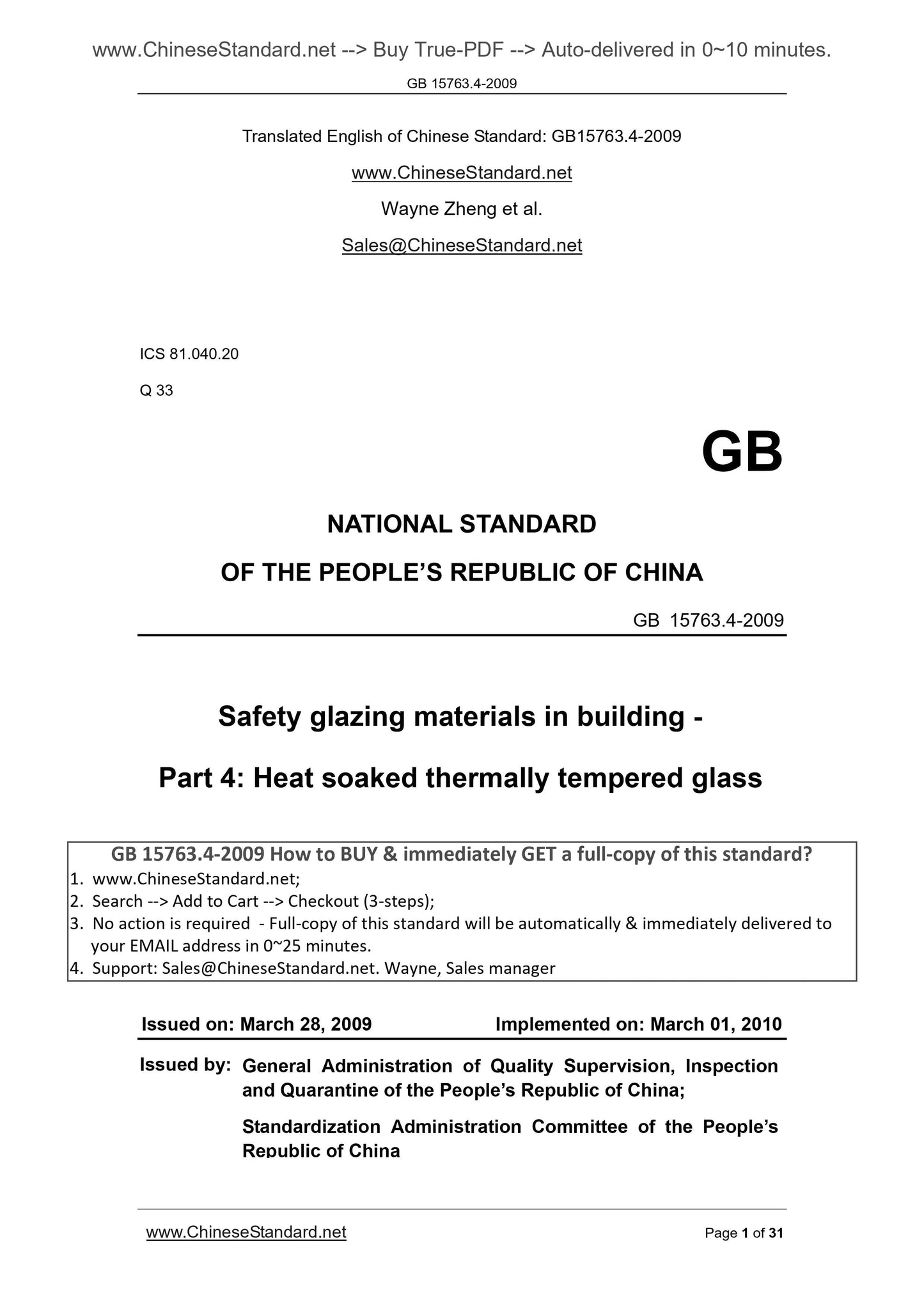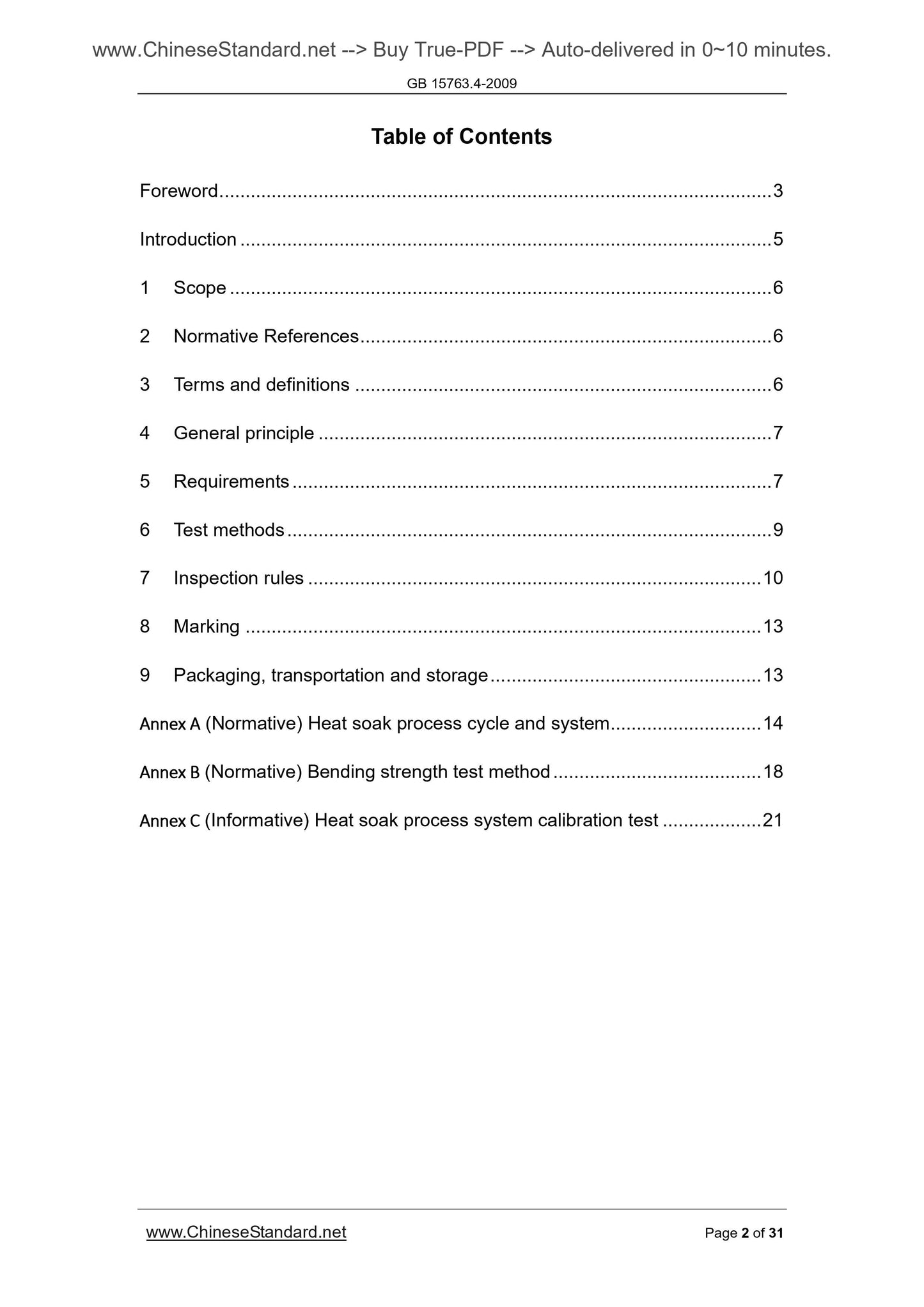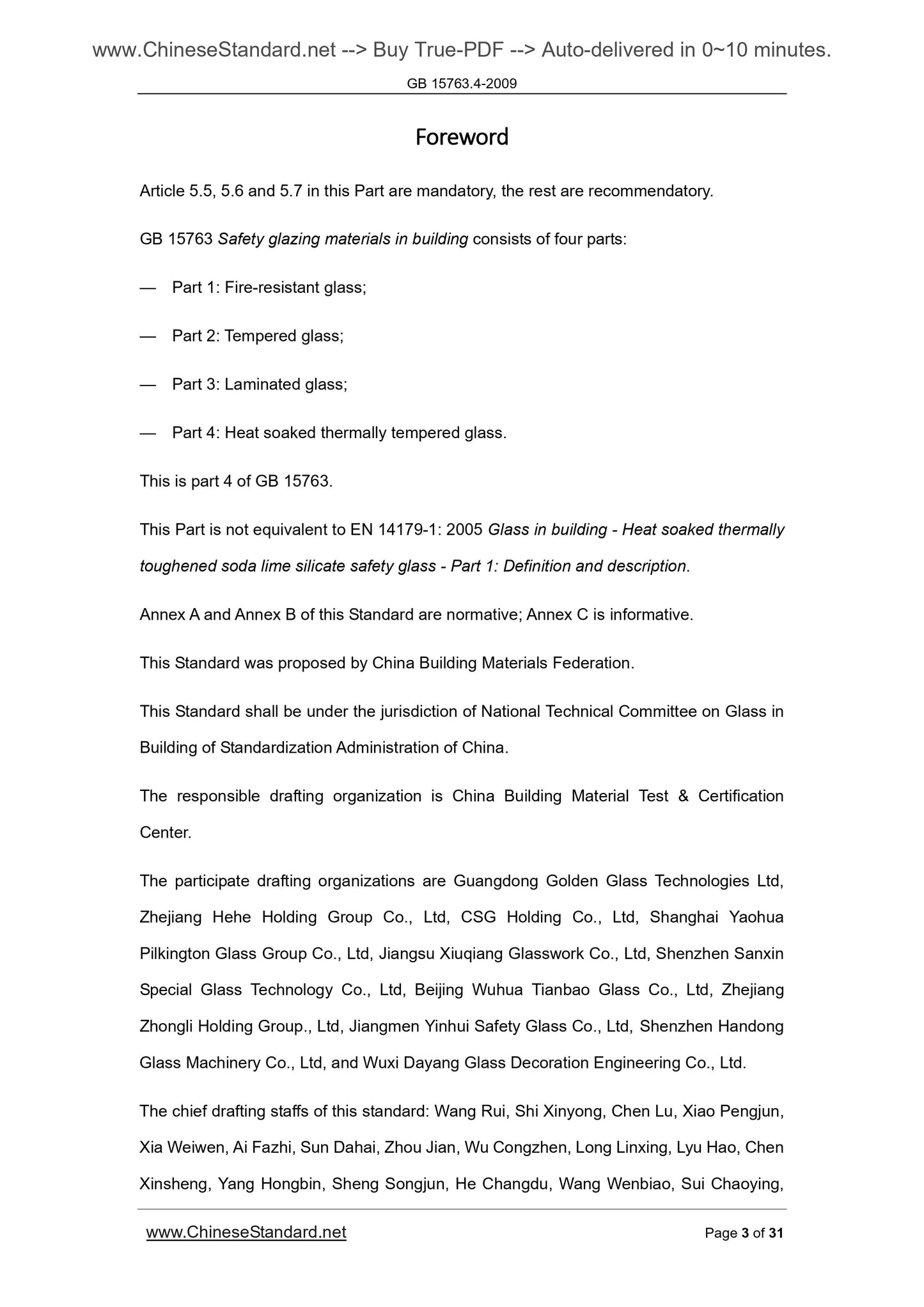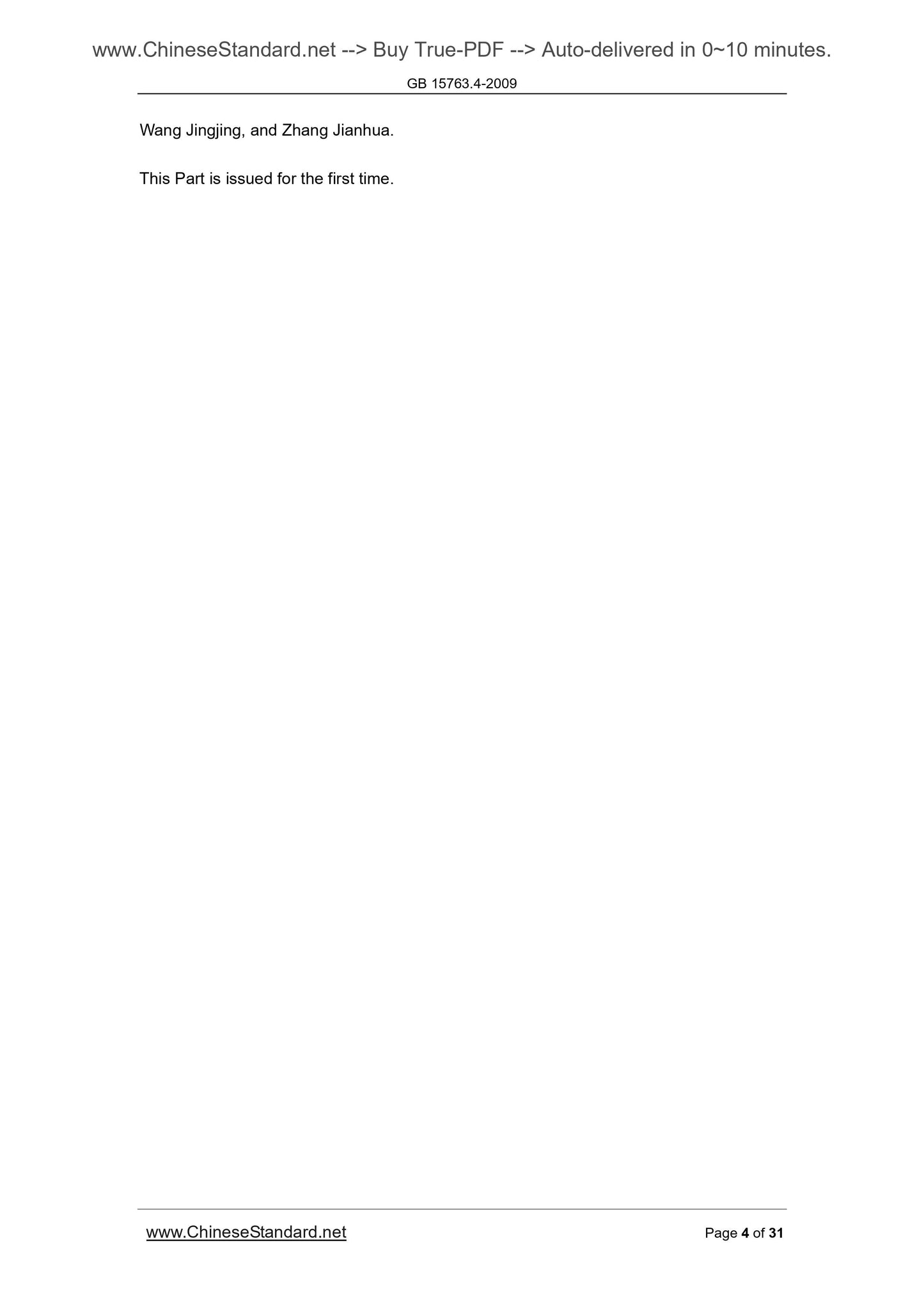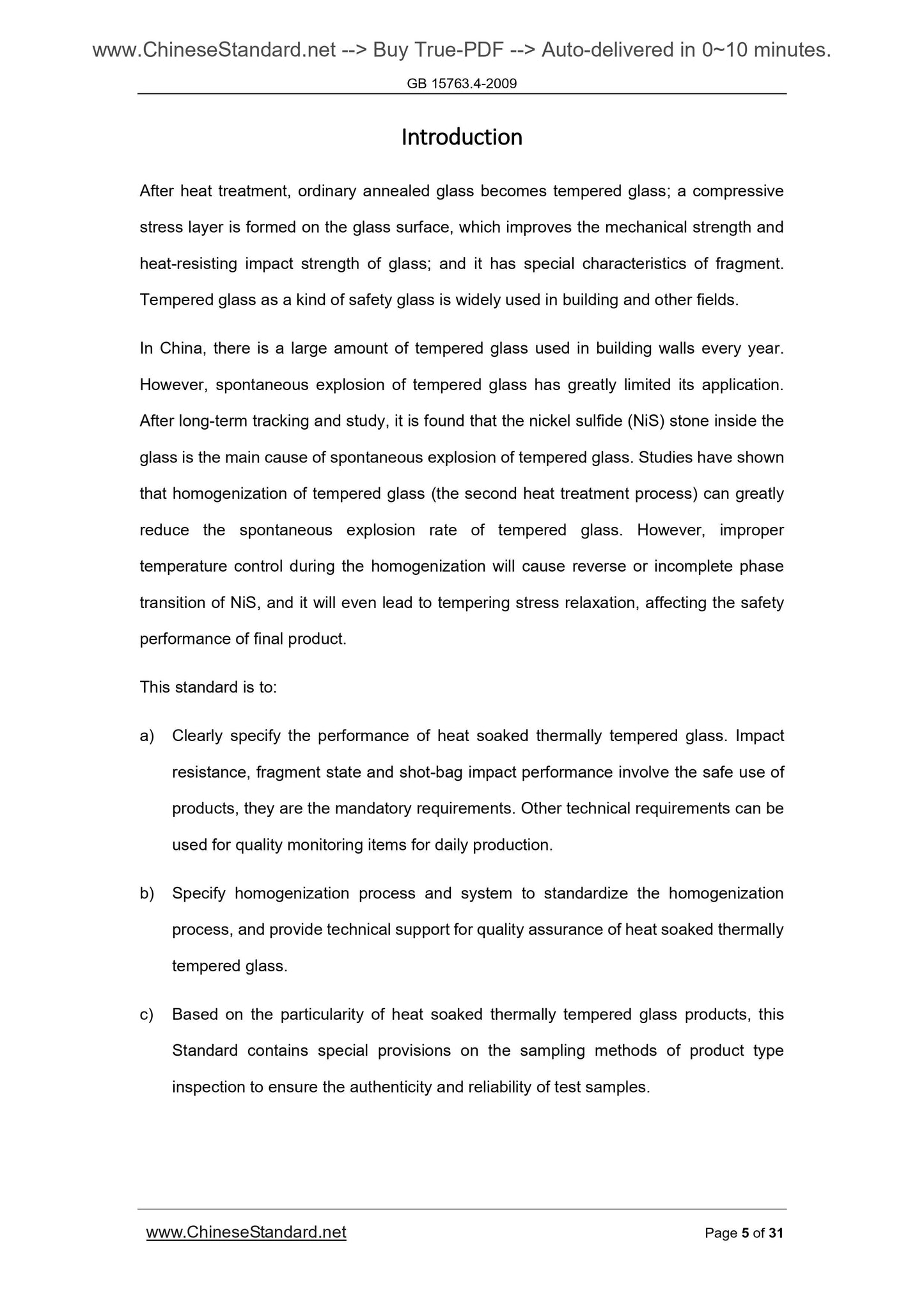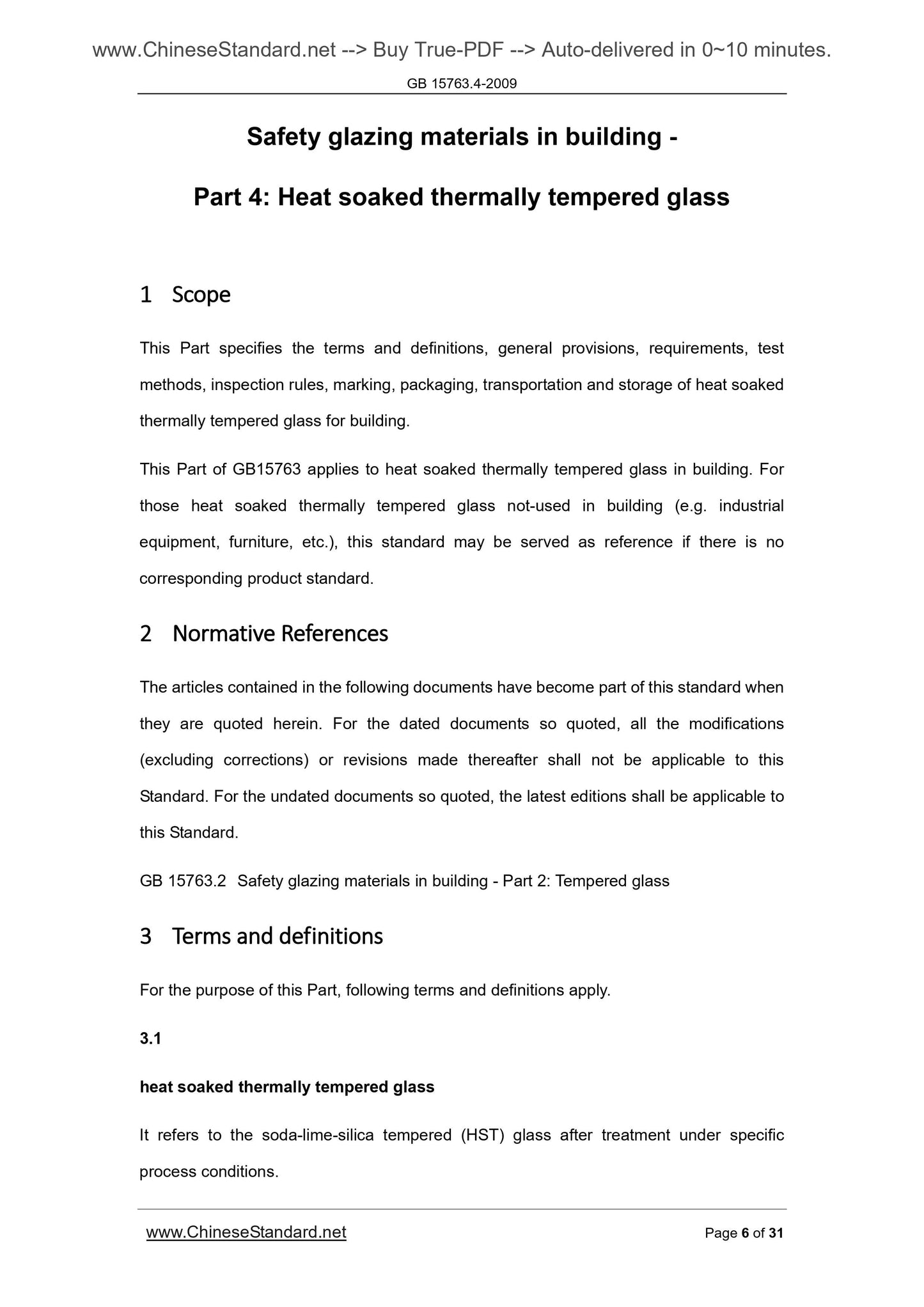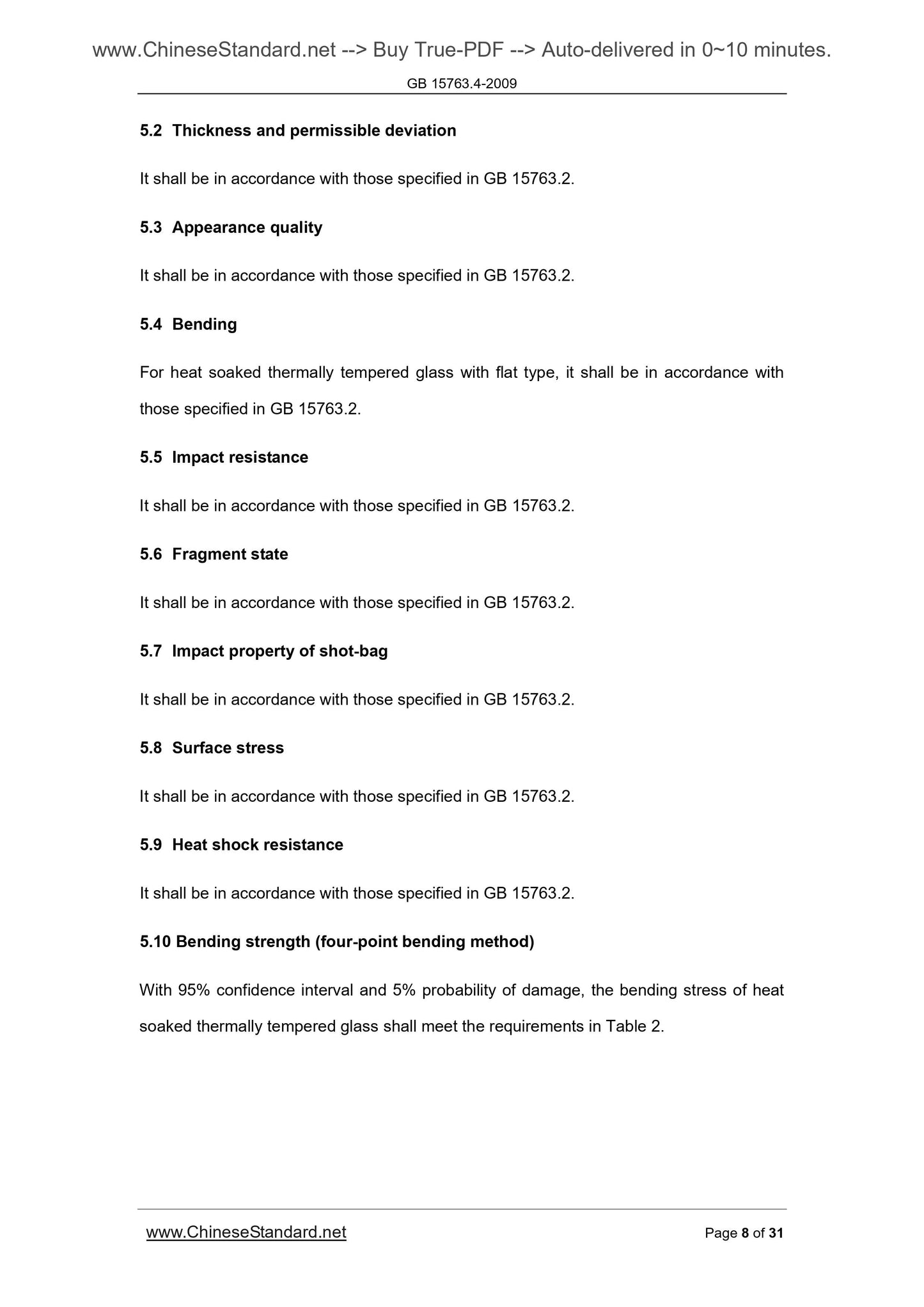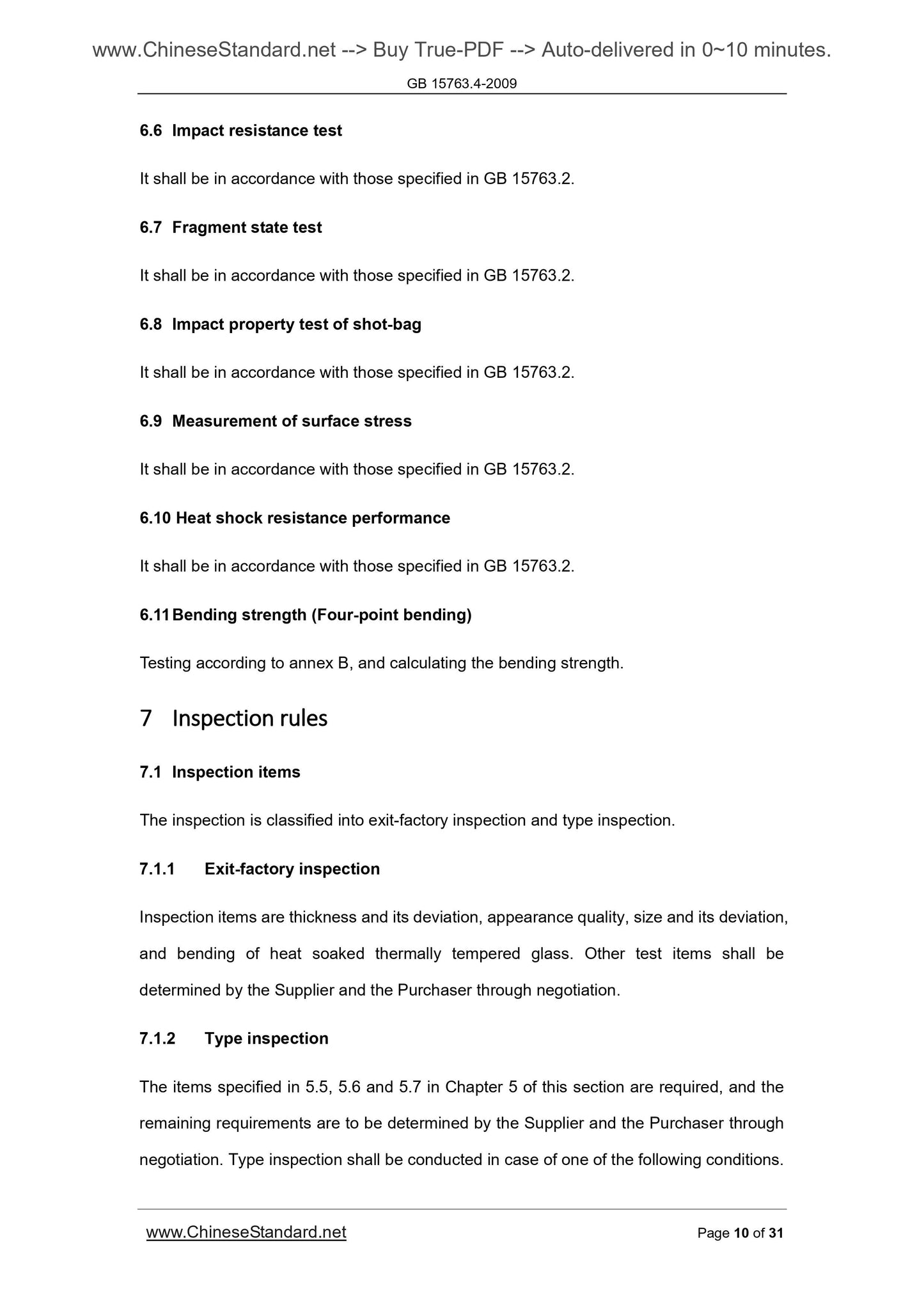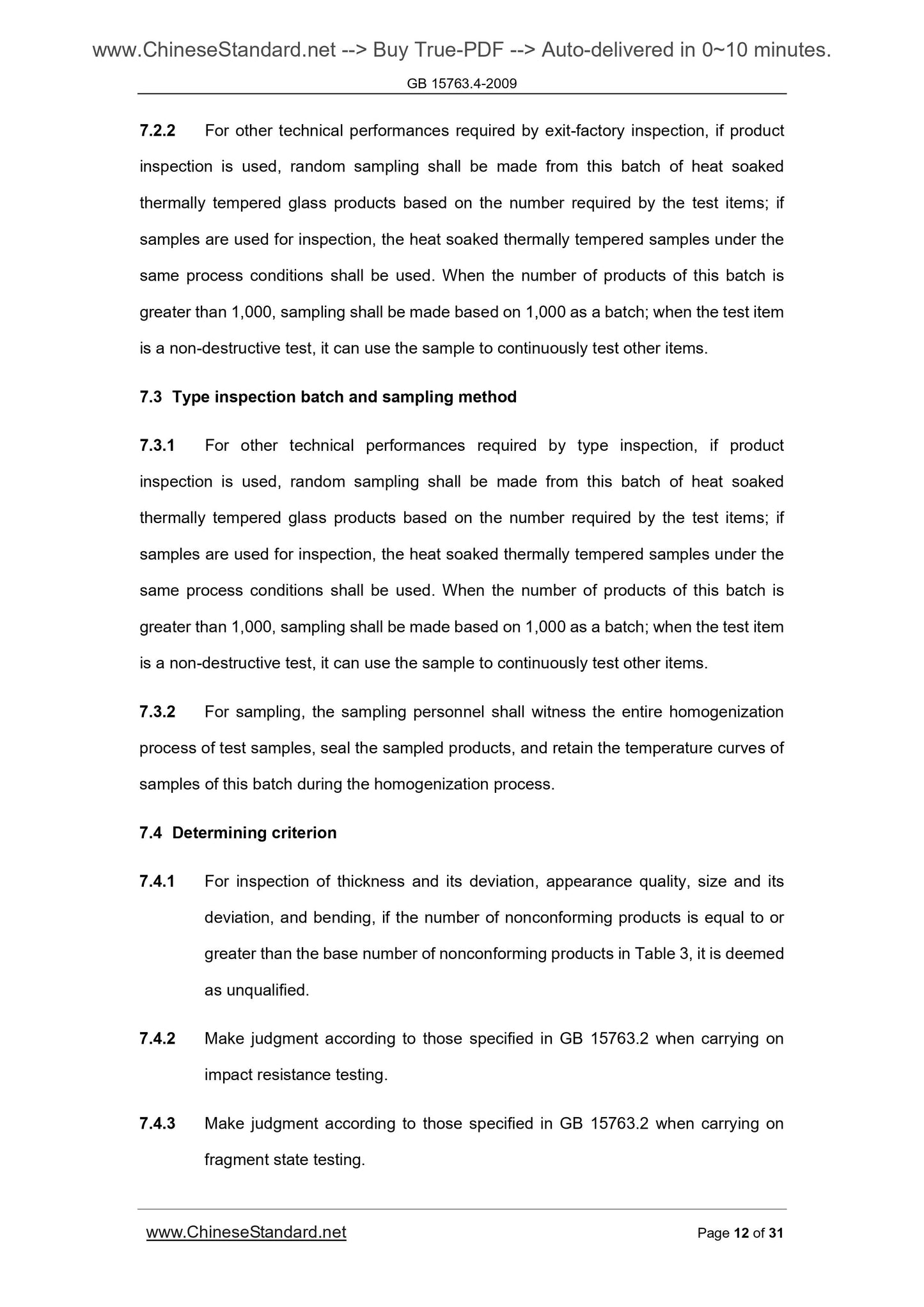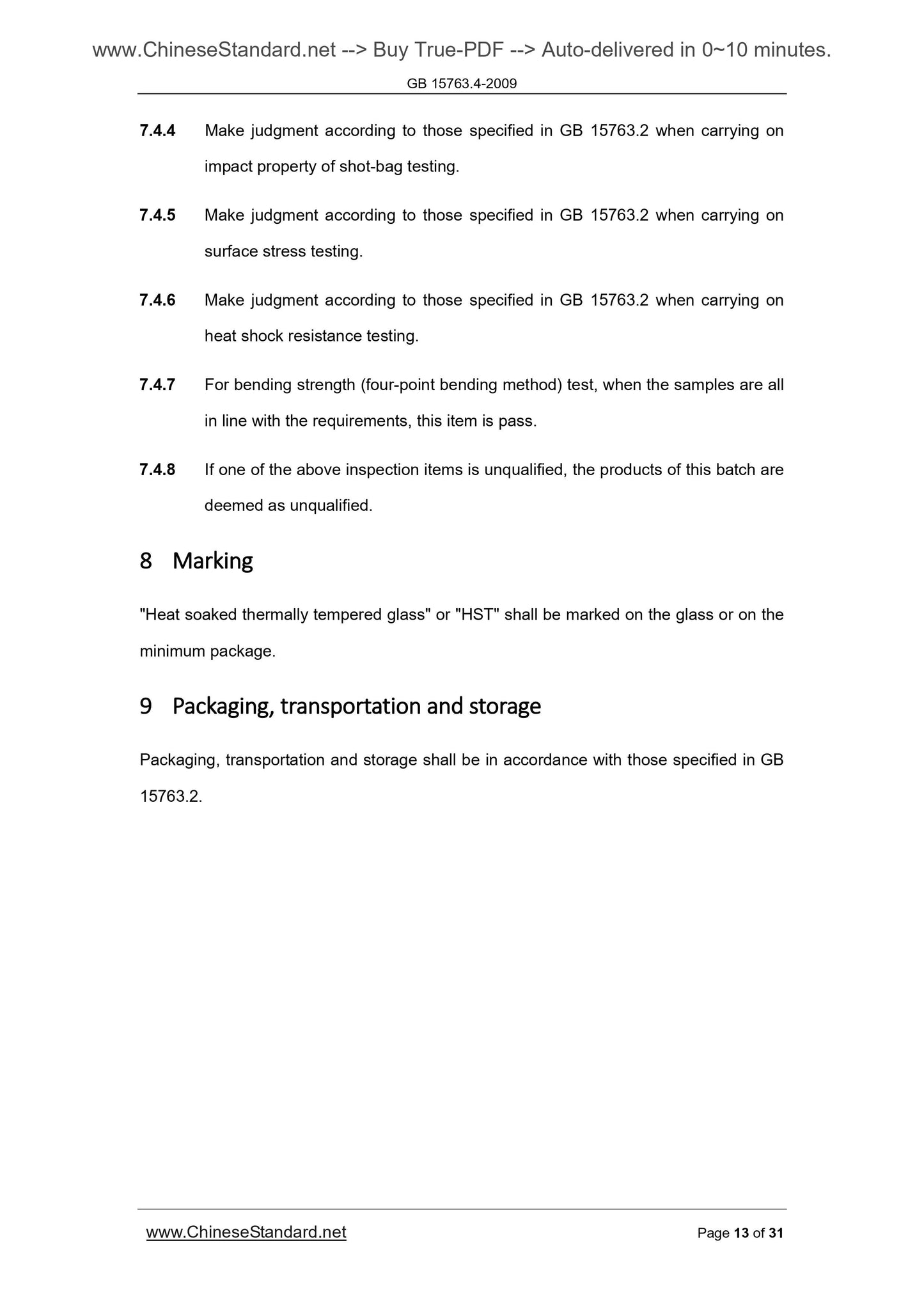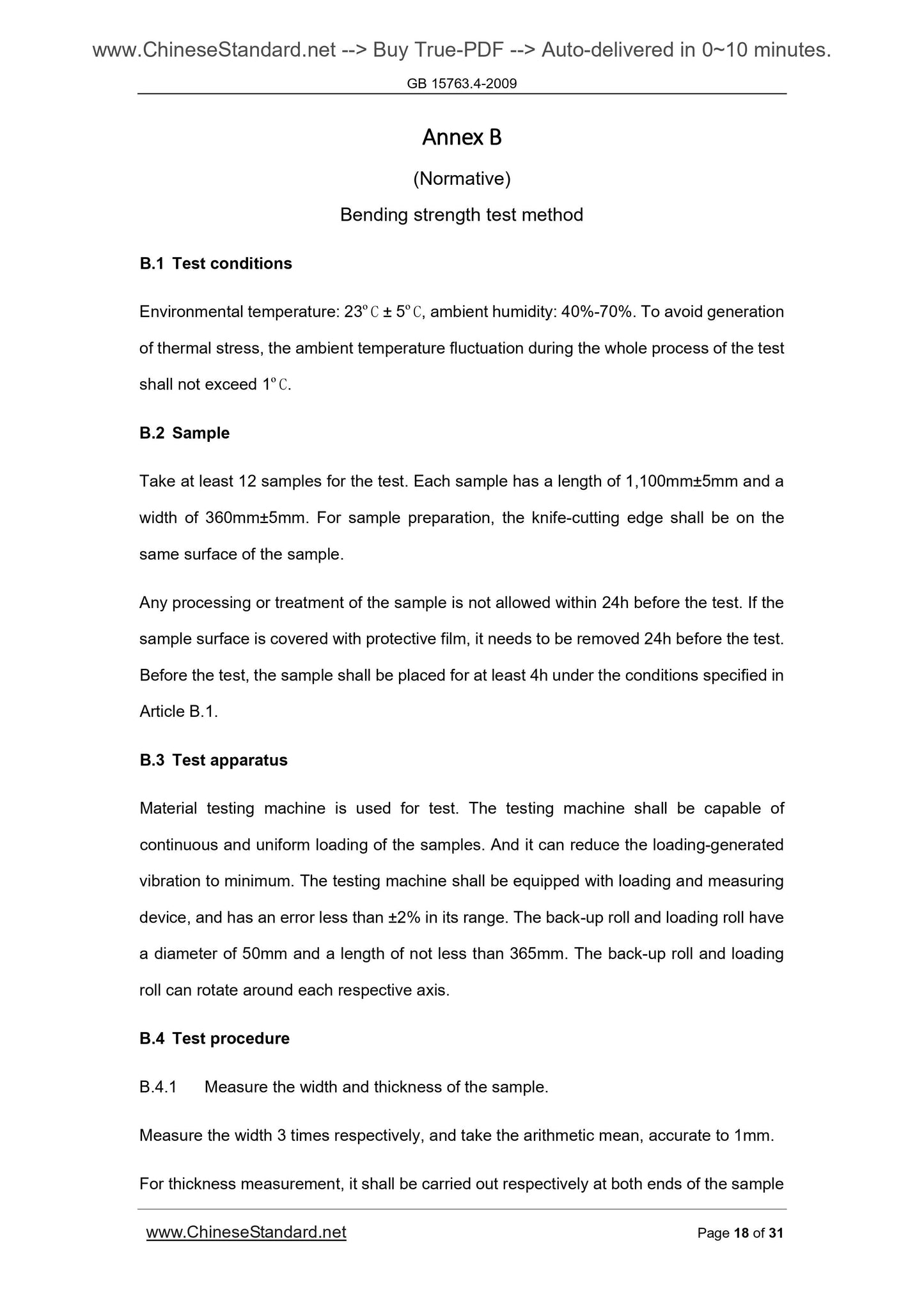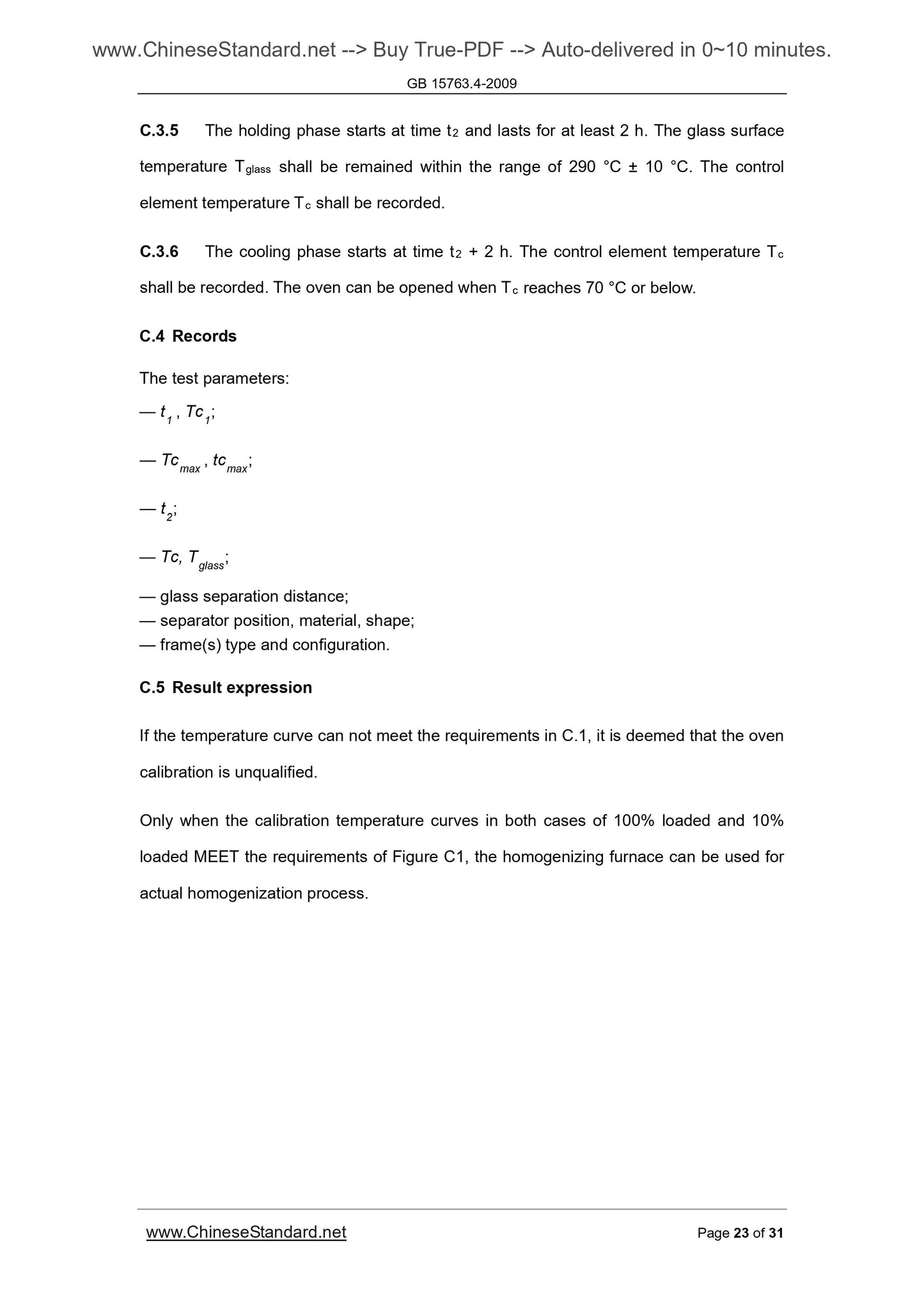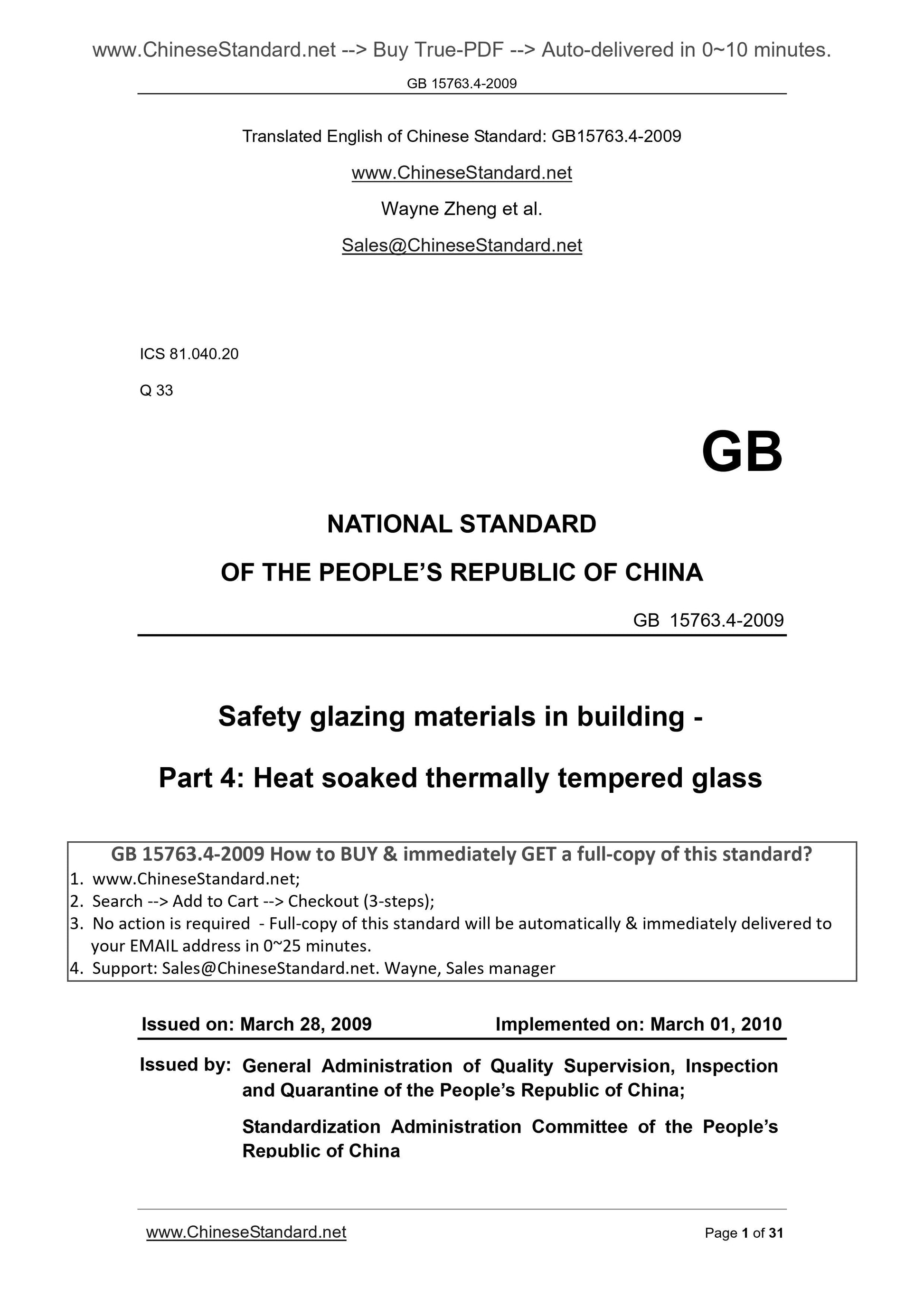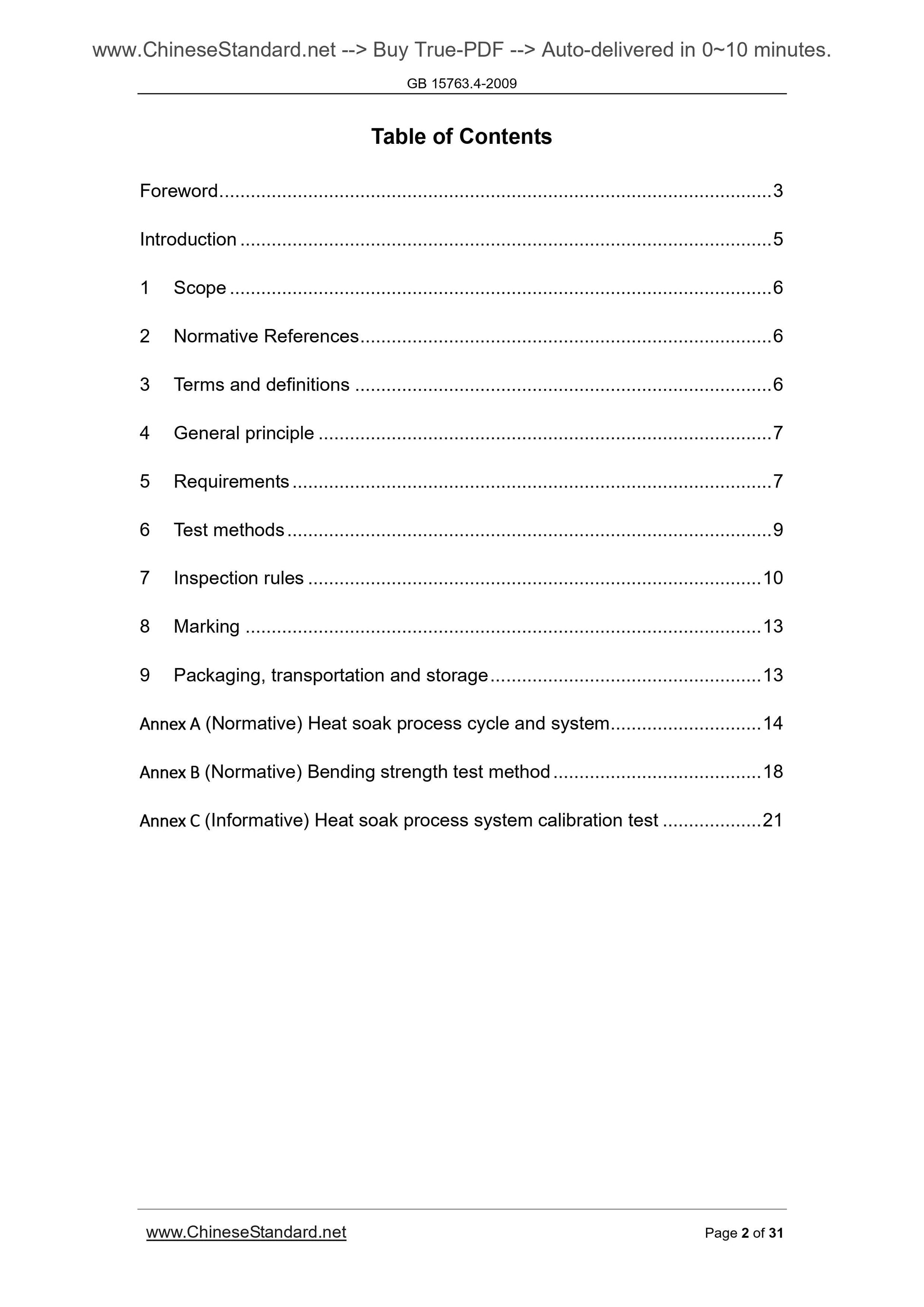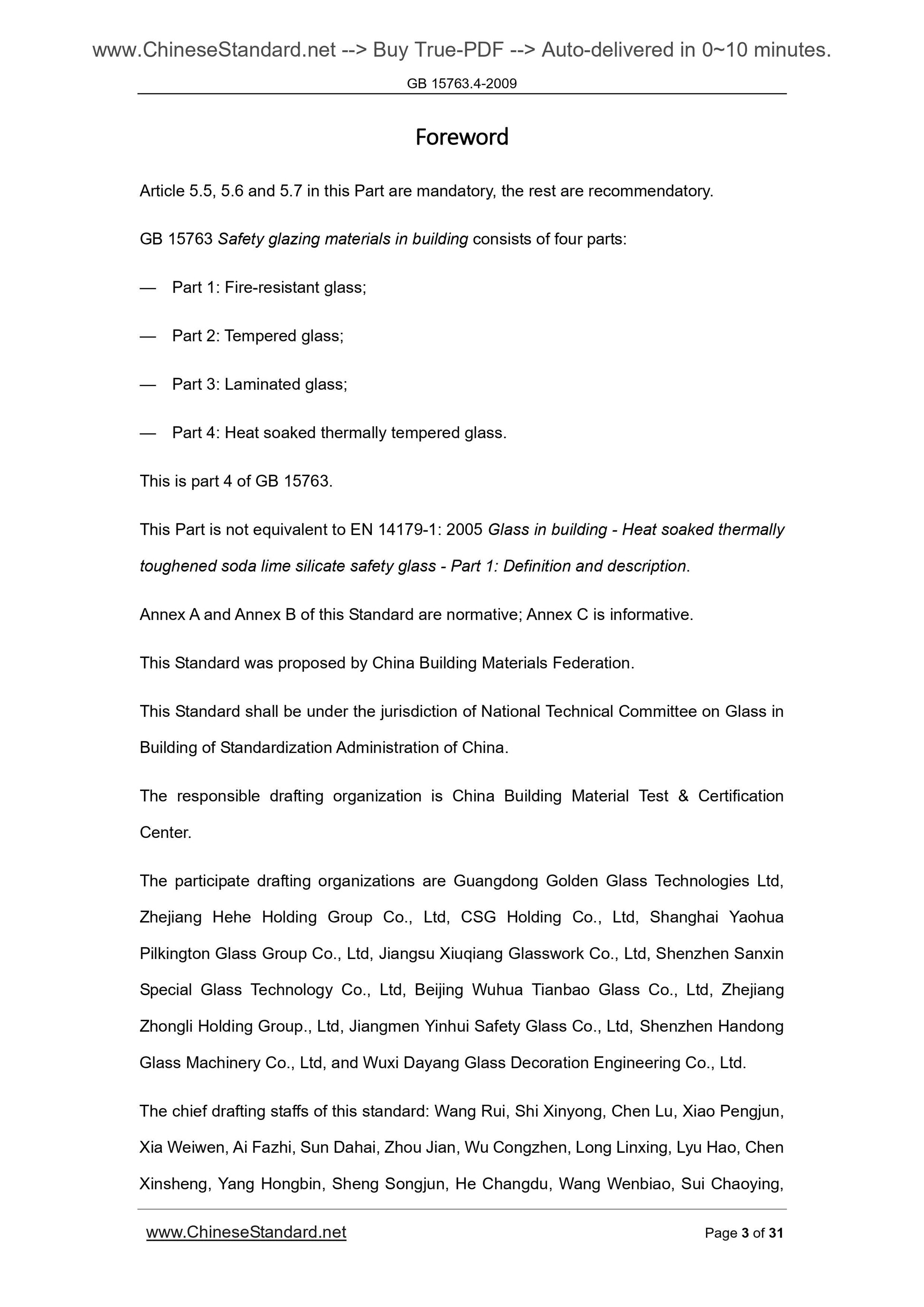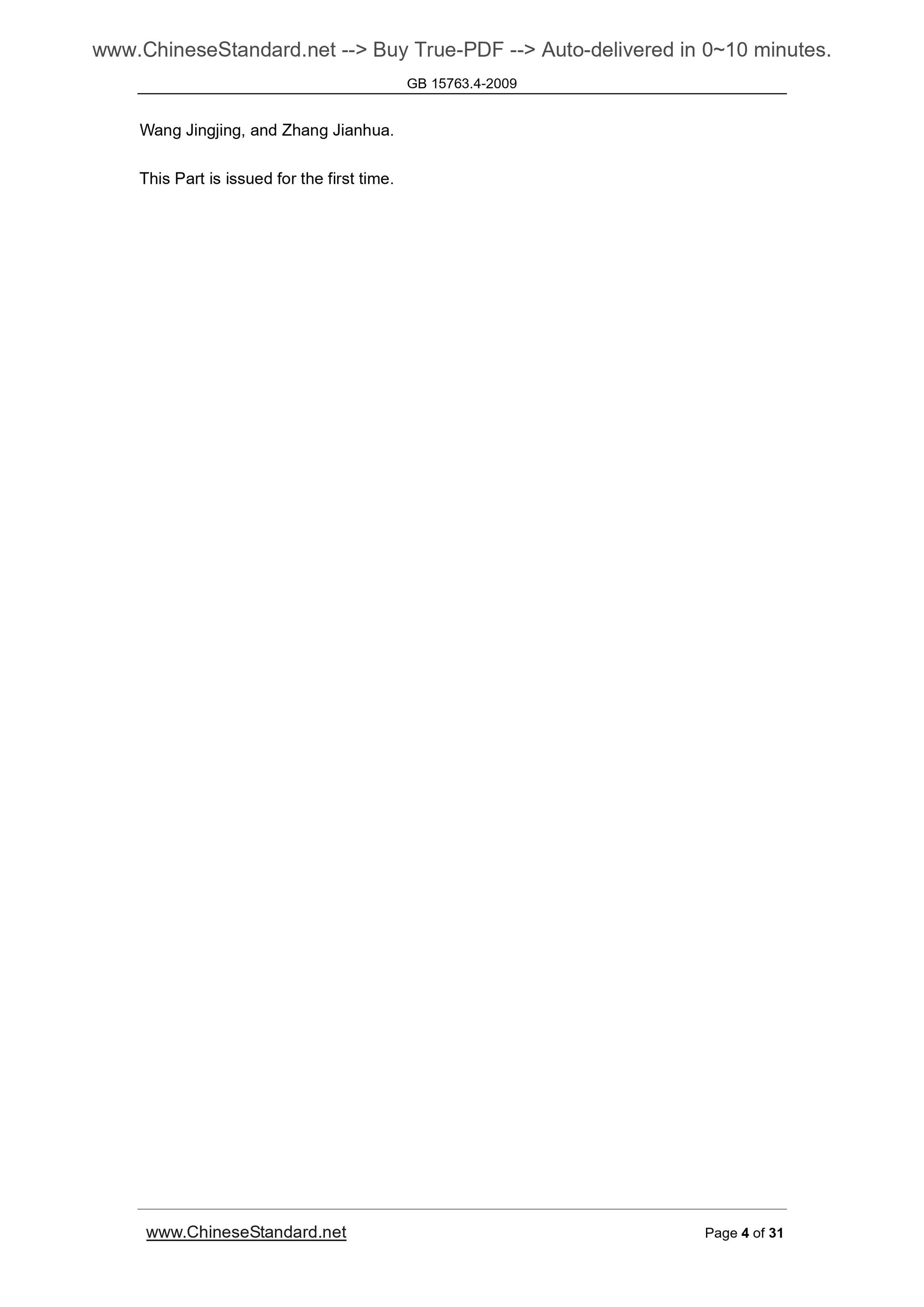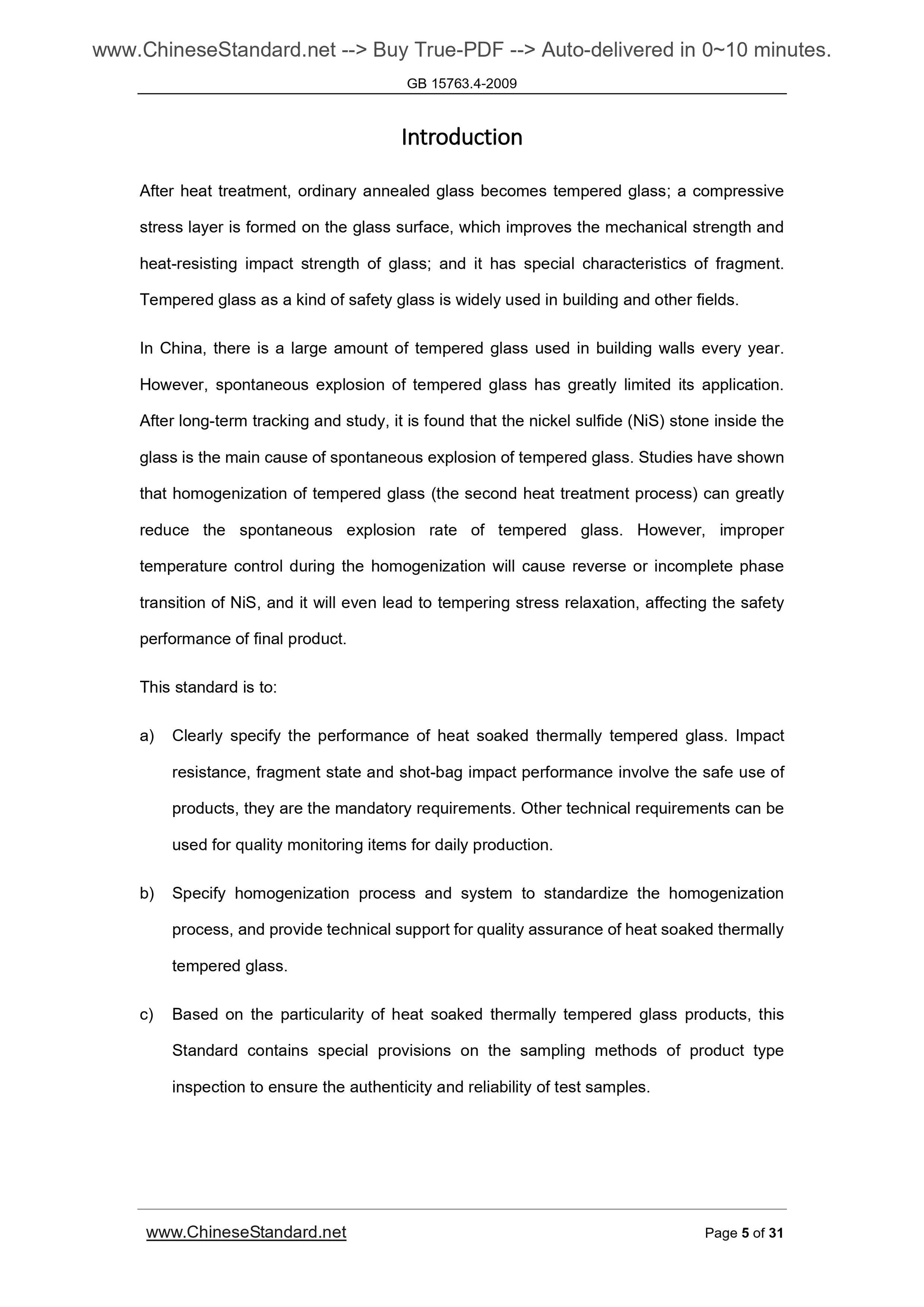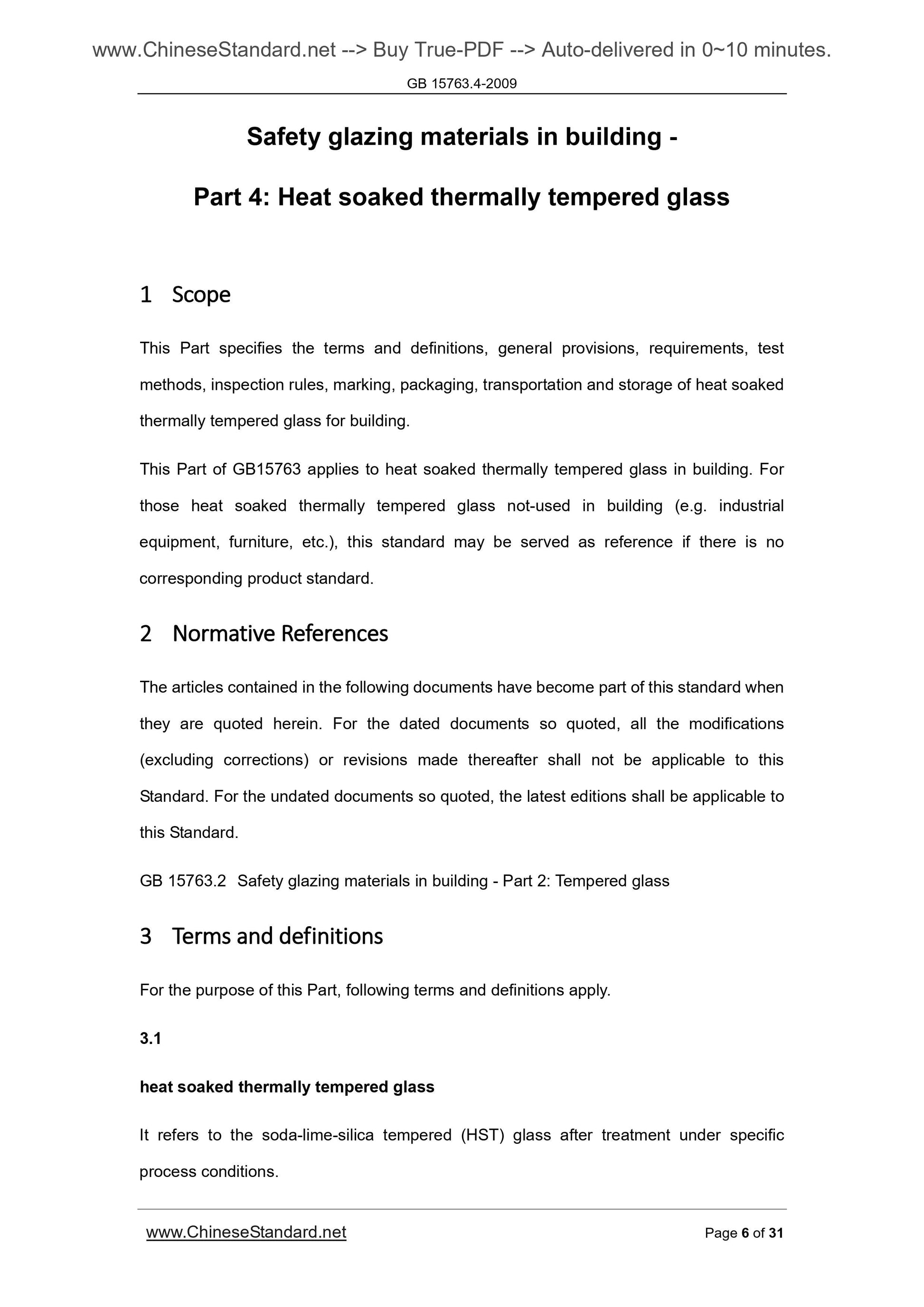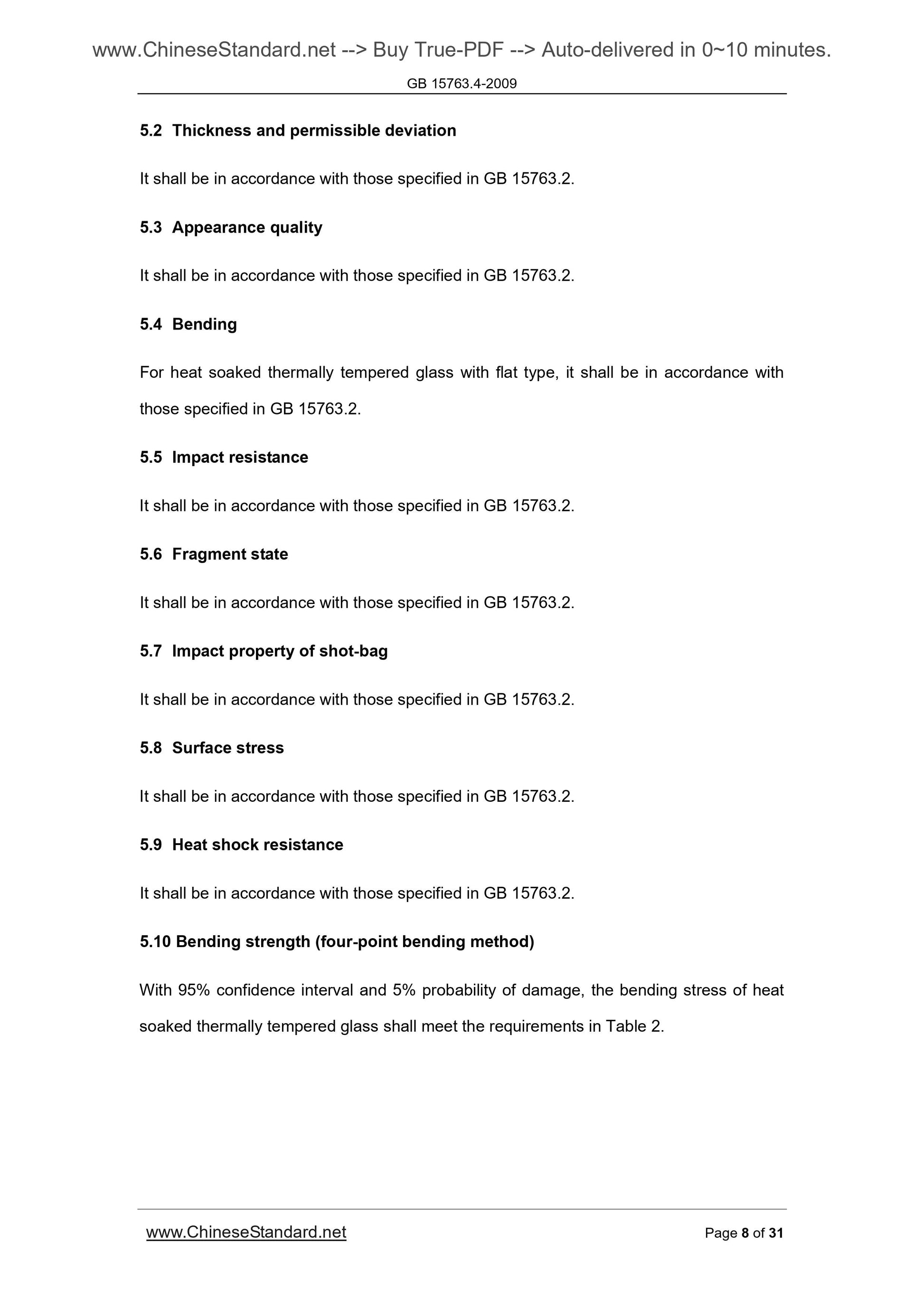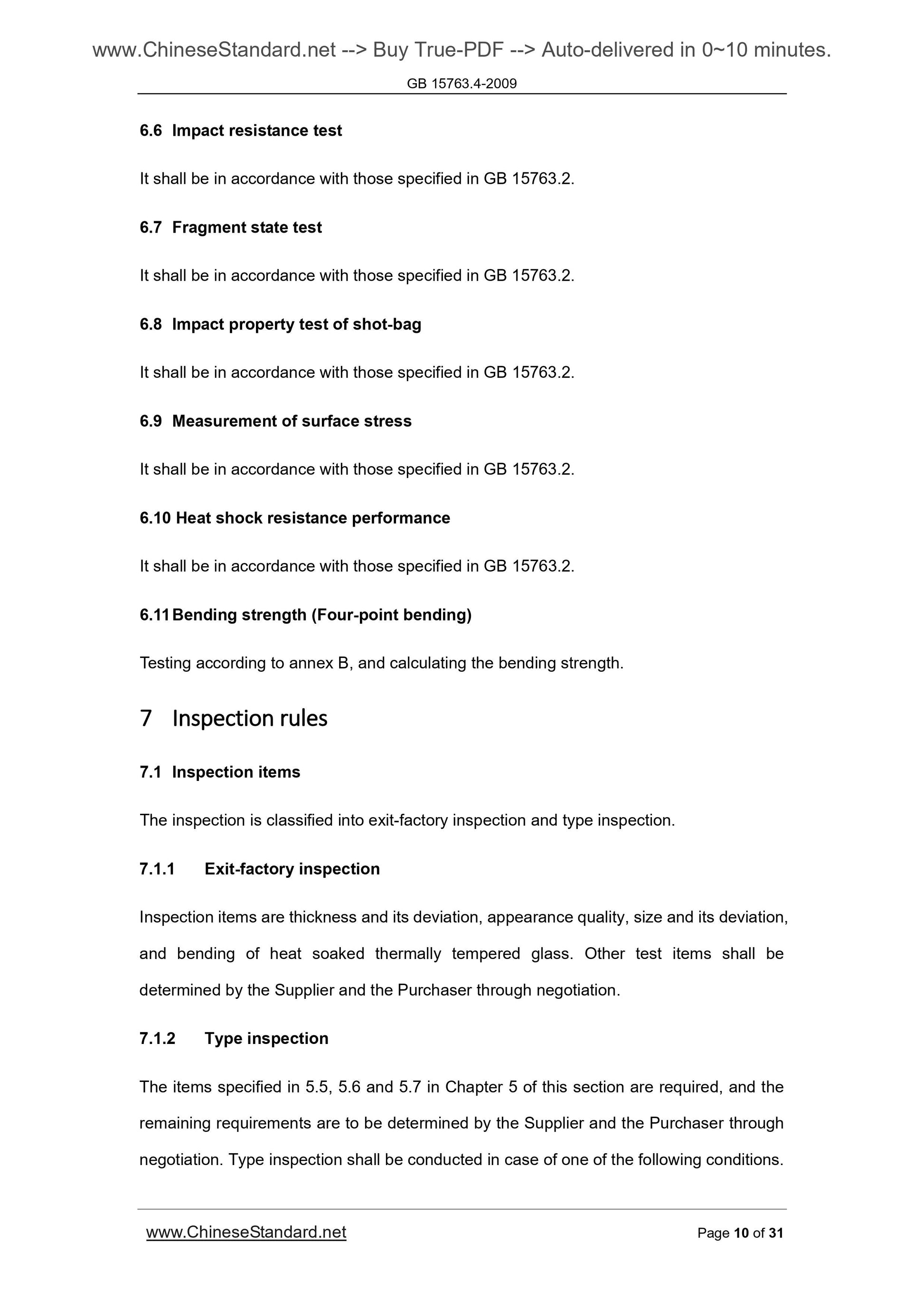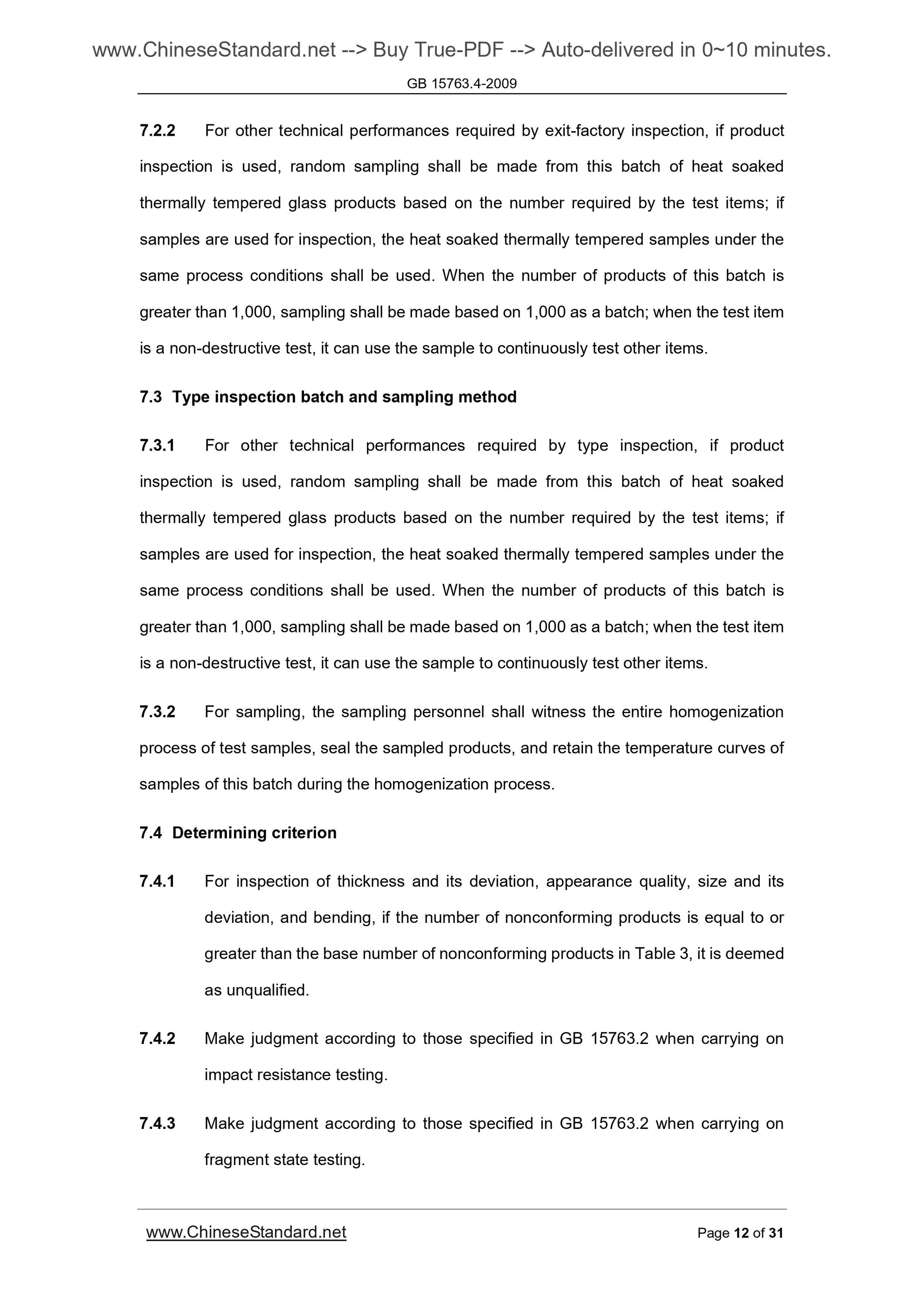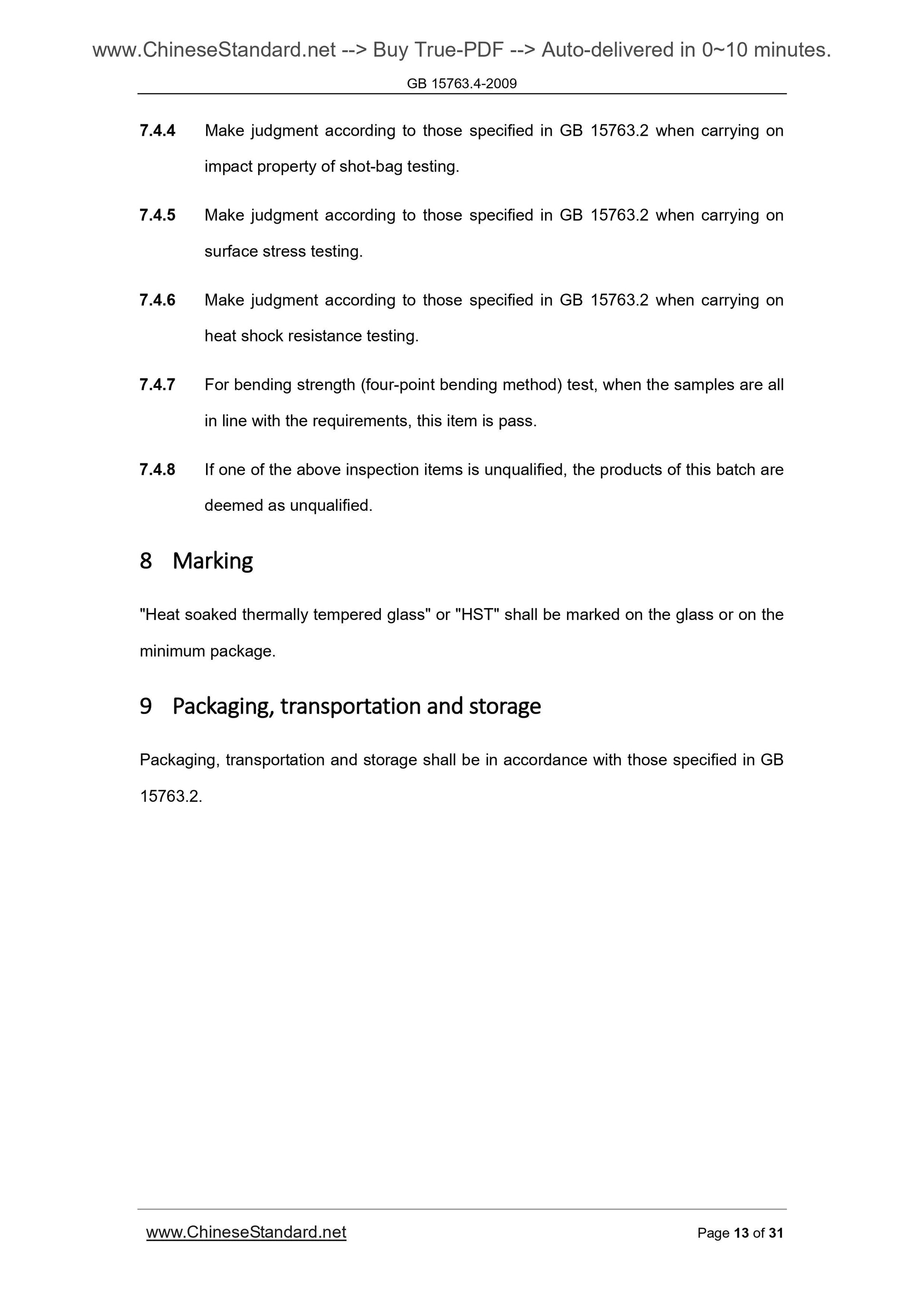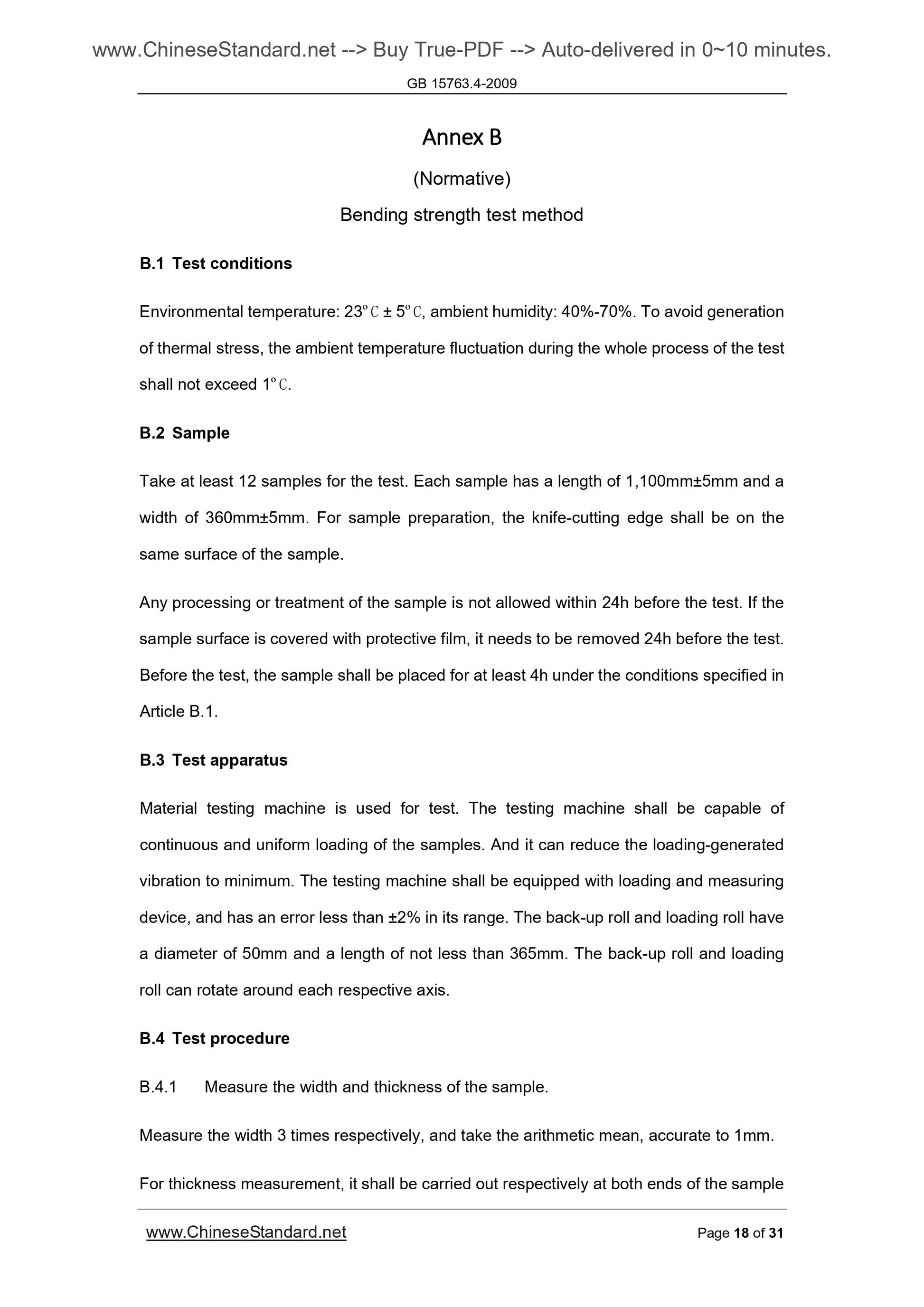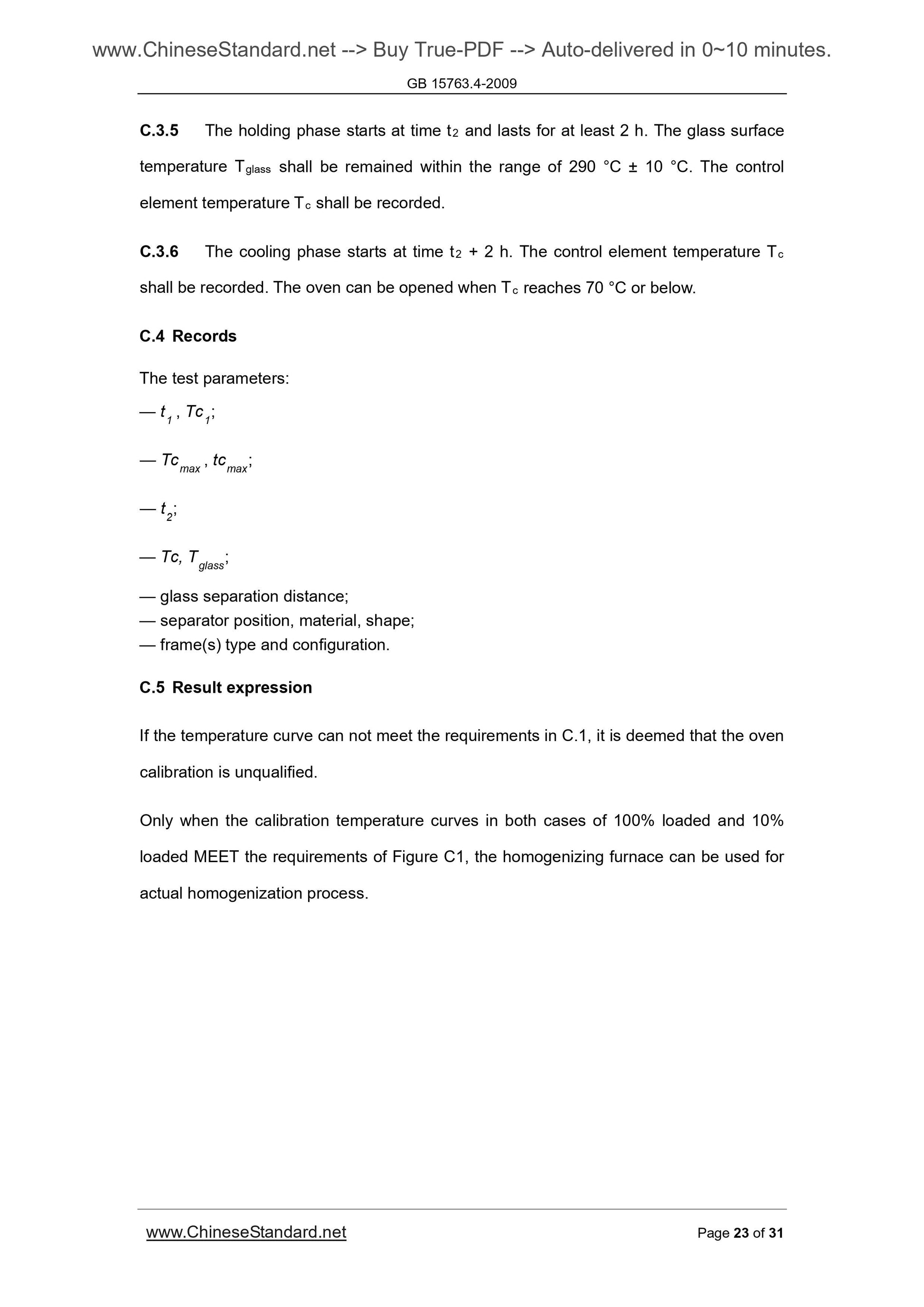1
/
of
12
www.ChineseStandard.us -- Field Test Asia Pte. Ltd.
GB 15763.4-2009 English PDF
GB 15763.4-2009 English PDF
Regular price
$150.00
Regular price
Sale price
$150.00
Unit price
/
per
Shipping calculated at checkout.
Couldn't load pickup availability
GB 15763.4-2009: Safety glazing materials in building -- Part 4: Heat soaked thermally tempered glass
Delivery: 9 seconds. Download (and Email) true-PDF + Invoice.Get Quotation: Click GB 15763.4-2009 (Self-service in 1-minute)
Newer / historical versions: GB 15763.4-2009
Preview True-PDF
Scope
This Part specifies the terms and definitions, general provisions, requirements, testmethods, inspection rules, marking, packaging, transportation and storage of heat soaked
thermally tempered glass for building.
This Part of GB15763 applies to heat soaked thermally tempered glass in building. For
those heat soaked thermally tempered glass not-used in building (e.g. industrial
equipment, furniture, etc.), this standard may be served as reference if there is no
corresponding product standard.
Basic Data
| Standard ID | GB 15763.4-2009 (GB15763.4-2009) |
| Description (Translated English) | Safety glazing materials in building -- Part 4: Heat soaked thermally tempered glass |
| Sector / Industry | National Standard |
| Classification of Chinese Standard | Q33 |
| Classification of International Standard | 81.040.20 |
| Word Count Estimation | 22,286 |
| Date of Issue | 2009-03-28 |
| Date of Implementation | 2010-03-01 |
| Adopted Standard | EN 14179-1-2005, NEQ |
| Regulation (derived from) | Announcement of Newly Approved National Standards No. 4, 2009 (No. 144 overall) |
| Issuing agency(ies) | General Administration of Quality Supervision, Inspection and Quarantine of the People's Republic of China, Standardization Administration of the People's Republic of China |
| Summary | This Chinese standard applies to building with a homogeneous glass terms and definitions, general provisions, requirements, test methods, inspection rules, marking, packaging, transportation and storage. This standard applies to buildings with homogeneous glass. For use outside the building (such as industrial equipment, furniture, etc.) homogeneous glass, if there is no corresponding product standards, reference may be used in this standard. |
Share
